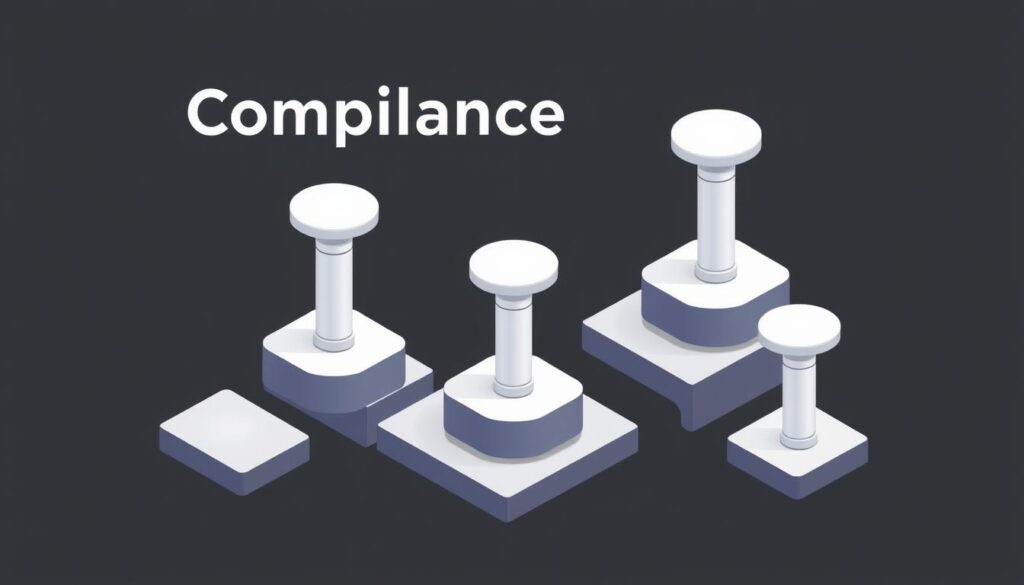Quick Wins for What is EKOS Gasboy ATG Compliance is What

In this comprehensive guide, we define what is EKOS Gasboy ATG Compliance is what by explaining how Gasboy’s Automatic Tank Gauge (ATG) hardware integrates with EKOS’s cloud‑hosted software to deliver real‑time alarm aggregation, automated reconciliation, and audit‑ready reporting—all within a single portal. We detail the module’s core features (alarms, reports, reconciliation, remote diagnostics, workflows), outline a practical, four‑step implementation process, and clarify the relevant EPA SPCC (40 CFR Part 112) requirements and best practices. A real‑world case study illustrates operational and financial benefits, while sections on ROI metrics and integrations highlight how this solution drives efficiency and compliance confidence. Finally, we address common FAQs and conclude with a clear call to action.
What is EKOS Gasboy ATG Compliance is what
Operators of aboveground fuel storage facilities face stringent EPA SPCC regulations (40 CFR Part 112) designed to prevent oil discharges. Non‑compliance can trigger civil penalties and corrective actions, making robust ATG monitoring and reporting essential. What is EKOS Gasboy ATG Compliance is what thousands of sites rely on to unify hardware‑generated tank‑level data with EKOS’s software workflows, ensuring alarms, reconciliations, and reports are automatically handled in a cloud‑based dashboard. By the end of this guide, you’ll understand its components, learn to implement it in four straightforward steps, and see how it safeguards your operation while boosting efficiency.
What Is EKOS Gasboy ATG Compliance?
EKOS Gasboy ATG Compliance is a dedicated compliance module within the EKOS fuel management platform, built upon Gasboy’s industry‑leading ATG hardware. It:
- Collects live tank‑level readings and leak‑alarms from Gasboy sensors across all sites.
- Aggregates alarms into a unified cloud dashboard for instant visibility and prioritization.
- Applies automated reconciliation workflows to compare delivered versus dispensed volumes, flagging discrepancies.
- Generates customizable, audit‑ready compliance reports (PDF/Excel) on demand or via scheduled exports.
This module seamlessly integrates Gasboy ATG hardware data via secure APIs into EKOS’s ecosystem, providing a single pane of glass for compliance teams and operations managers.

Key Features & Benefits
3.1 Real‑Time Alarm Aggregation
EKOS Gasboy ATG Compliance consolidates alarms from all connected ATG probes—level‑low, leak alarms, overfill warnings—into one real‑time dashboard. This centralized view eliminates manual alarm checks, enabling rapid response and minimizing spill risks.
3.2 Automated Compliance Reports
With built‑in templates, the system generates site‑wide and period‑specific compliance summaries in PDF or Excel formats at the click of a button. Scheduled exports can be emailed automatically to stakeholders, reducing report‑prep time from hours to minutes.
3.3 Inventory Reconciliation
By cross‑referencing delivery records (from fuel truck manifests or card transactions) with dispenser‑level dispense data, it pinpoints volume variances that signal leaks, meter tampering, or inventory errors. Alerts highlight anomalies beyond user‑defined thresholds.
3.4 Remote Diagnostics & Firmware Updates
Technicians can access probe diagnostics, signal strength, and firmware versions remotely via the cloud, pushing updates without site visits. This proactive maintenance reduces downtime and service costs.
3.5 Streamlined, Paperless Workflows
Role‑based access controls assign compliance, operations, and executive views, while digital inspection checklists and corrective action logs keep all records centralized. Mobile‑friendly interfaces let field staff complete inspections on tablets or smartphones, automatically syncing back to the dashboard.
Step‑by‑Step Setup & Configuration
4.1 Hardware Prerequisites
- Install Gasboy ATG Probes: Mount probes in each tank per Gasboy guidelines.
- Connectivity Modules: Ensure each ATG interface module has reliable cellular or LAN access for continuous data transmission .
4.2 Software Onboarding
- EKOS Account Setup: Request access and define user roles—Administrator, Compliance Officer, Technician.
- API Integration: In the EKOS portal, input Gasboy API credentials to securely link each site’s ATG hardware.
4.3 Alarm Thresholds & Alert Rules
- Threshold Configuration: Set tank‑level high/low limits, leak‑alert thresholds, and overfill triggers.
- Notification Channels: Define email, SMS, or in‑app alerts for different user roles, ensuring the right personnel respond .
4.4 Reporting Configuration
- Template Selection: Choose or customize report templates—monthly compliance, incident summaries, reconciliation reports.
- Scheduling & Delivery: Schedule automated exports to designated recipients or integrate with document management systems via SFTP or API.

5. Regulatory Standards & Best Practices
5.1 EPA SPCC Requirements (40 CFR Part 112)
Facilities with aggregate aboveground oil storage capacity exceeding 1 320 gallons must implement SPCC plans covering prevention, control, and countermeasure measures eCFR. Plans require regular inspections, testing, and documentation of tank integrity, leak detection, and operator training.
5.2 Good Engineering Practice & Plan Certification
SPCC plans must follow PE‑certified good engineering practices, document operating procedures, and be reviewed every five years or after significant facility modifications.
5.3 Inspection & Testing Schedules
- Monthly Checks: Visual inspections of spill prevention equipment, leak monitors, and overfill protection.
- Annual Integrity Testing: UL 142/UL 2085 tank testing and calibration verification per EPA guidance.
5.4 Audit‑Ready Documentation
EKOS automatically archives alarms, reconciliation logs, inspection checklists, and corrective actions, producing a centralized repository that streamlines regulatory audits and minimizes manual file‑keeping.
6. Case Study: Acme Fuel Depot
Background: Acme Fuel Depot operates 15 multi‑tank sites in the Midwest, each with 3–5 aboveground storage tanks. In Q1 2024, they implemented EKOS Gasboy ATG Compliance across all sites.
- Implementation Time: Completed onboard in two weeks, including hardware linkage and user training.
- Results:
- 75% reduction in manual compliance tasks (from 20 hours to 5 hours/month).
- 12 early leak detections prevented potential environmental incidents.
- 90% faster report generation (from 4 hours to 15 minutes).
These improvements not only ensured compliance but also freed staff to focus on customer service and preventive maintenance.
7. Measuring ROI & Business Impact
7.1 Time Savings
Automated workflows reduce human intervention by up to 80%, translating to labor savings and faster response times.
7.2 Cost Avoidance
Early leak detection and accurate reconciliation help avoid fines, spill remediation costs, and inventory shrinkage—typically saving operators $10 000–$25 000 annually.
7.3 Operational Efficiency
Centralized dashboards improve decision‑making, optimize fuel ordering, and reduce emergency service calls by up to 50%.
8. Integration & API Capabilities
8.1 Third‑Party Sensor Support
Beyond Gasboy ATGs, EKOS can ingest data from Veeder‑Root, OPW, and other compliant gauges via open APIs, offering a vendor‑agnostic compliance platform.
ERP & SCM Integration
Integrations with ERP systems (SAP, Oracle) and supply‑chain platforms consolidate inventory, procurement, and compliance data—enabling end‑to‑end visibility and streamlined accounting workflows.
Frequently Asked Questions
Q1. What is EKOS Gasboy ATG Compliance is what exactly?
It’s a compliance module that merges Gasboy ATG hardware data with EKOS software workflows to automate alarms, reconciliations, and reports—all in one cloud dashboard.
Q2. Which regulations does it address?
Primarily EPA SPCC (40 CFR Part 112), plus state and local spill‑prevention requirements. Documentation is audit‑ready for inspectors.
Q3. Can I customize alarm thresholds?
Yes, tank‑level, leak, and overfill thresholds are fully configurable by site and tank type.
Q4. How does reconciliation work?
It cross‑references delivery manifests and dispenser logs, flagging variances for user review via dashboards and alert emails.
Q5. Is mobile access supported?
All dashboards and inspection workflows are optimized for tablets and smartphones, with offline sync capabilities.
Conclusion & Call to Action
What is EKOS Gasboy ATG Compliance is what transforms fuel‑site compliance from a manual, paper‑driven chore into an automated, cloud‑based workflow that safeguards your operation, reduces costs, and ensures audit readiness. By centralizing alarms, reconciliation, and reporting, it empowers your team to focus on preventive maintenance and customer service—without worrying about missed inspections or regulatory gaps.
Ready to secure your ATG compliance and streamline operations? Contact Gasboy today for a personalized demo and discover how EKOS Gasboy ATG Compliance can protect your bottom line and environment. more



